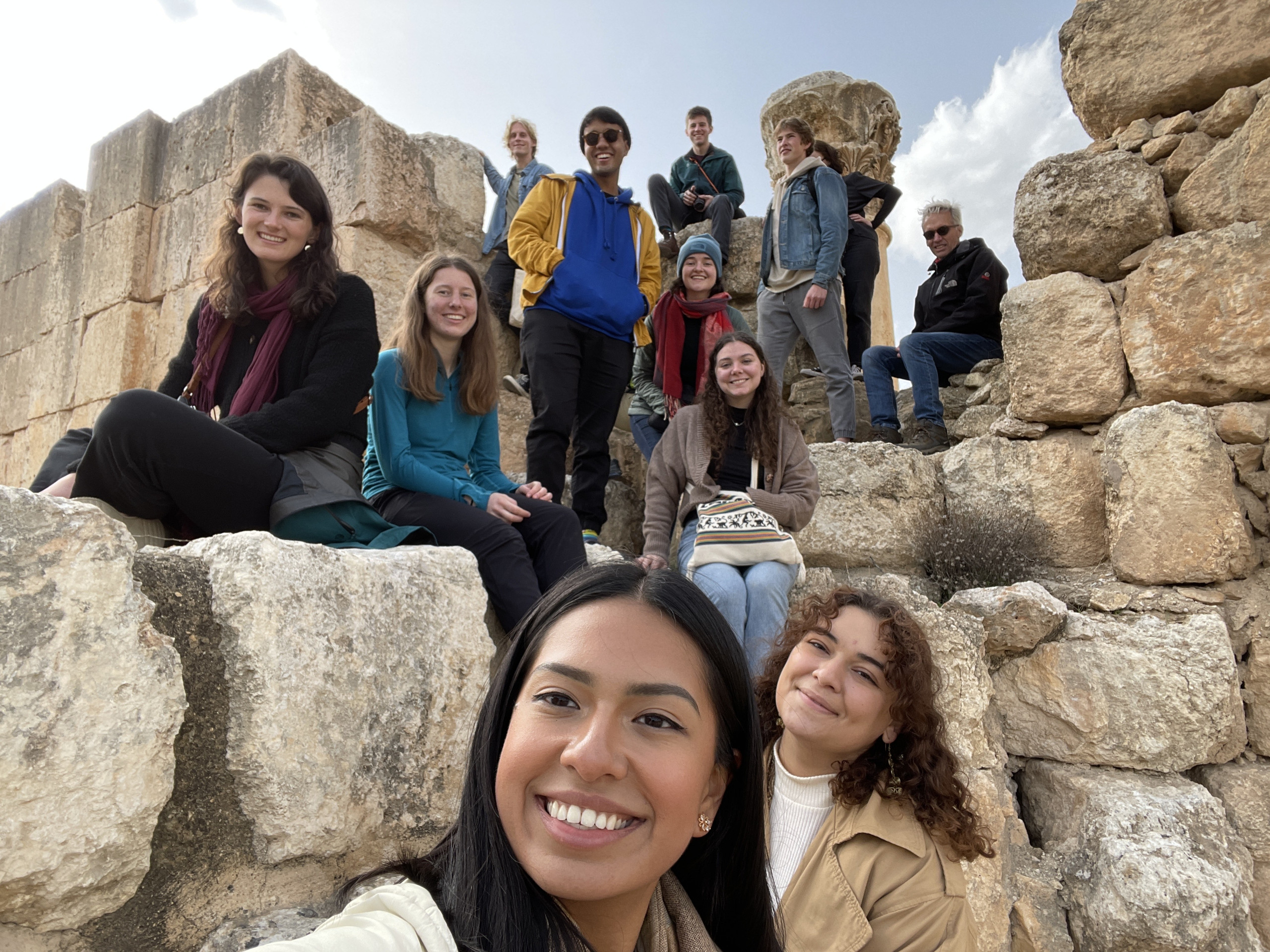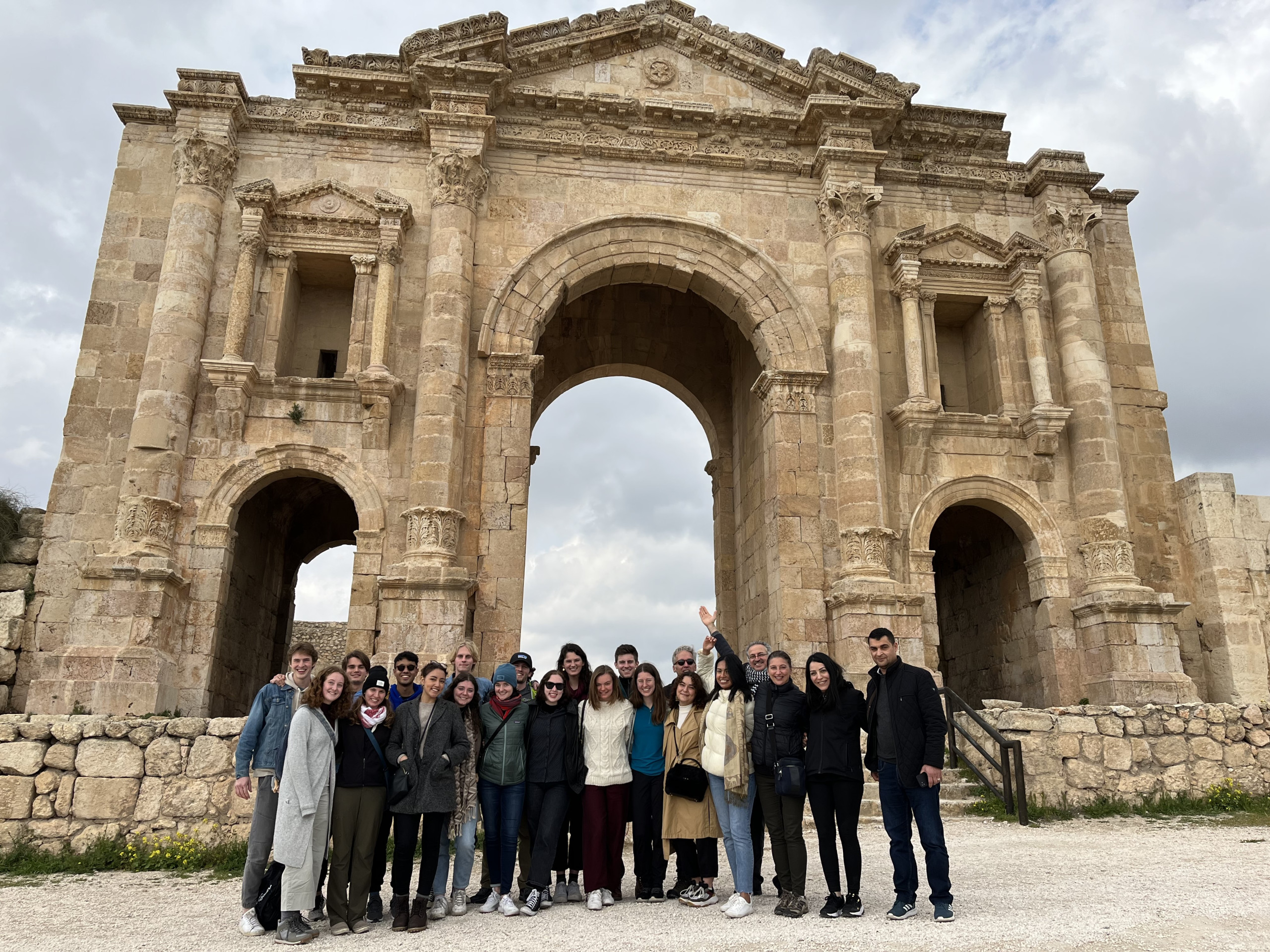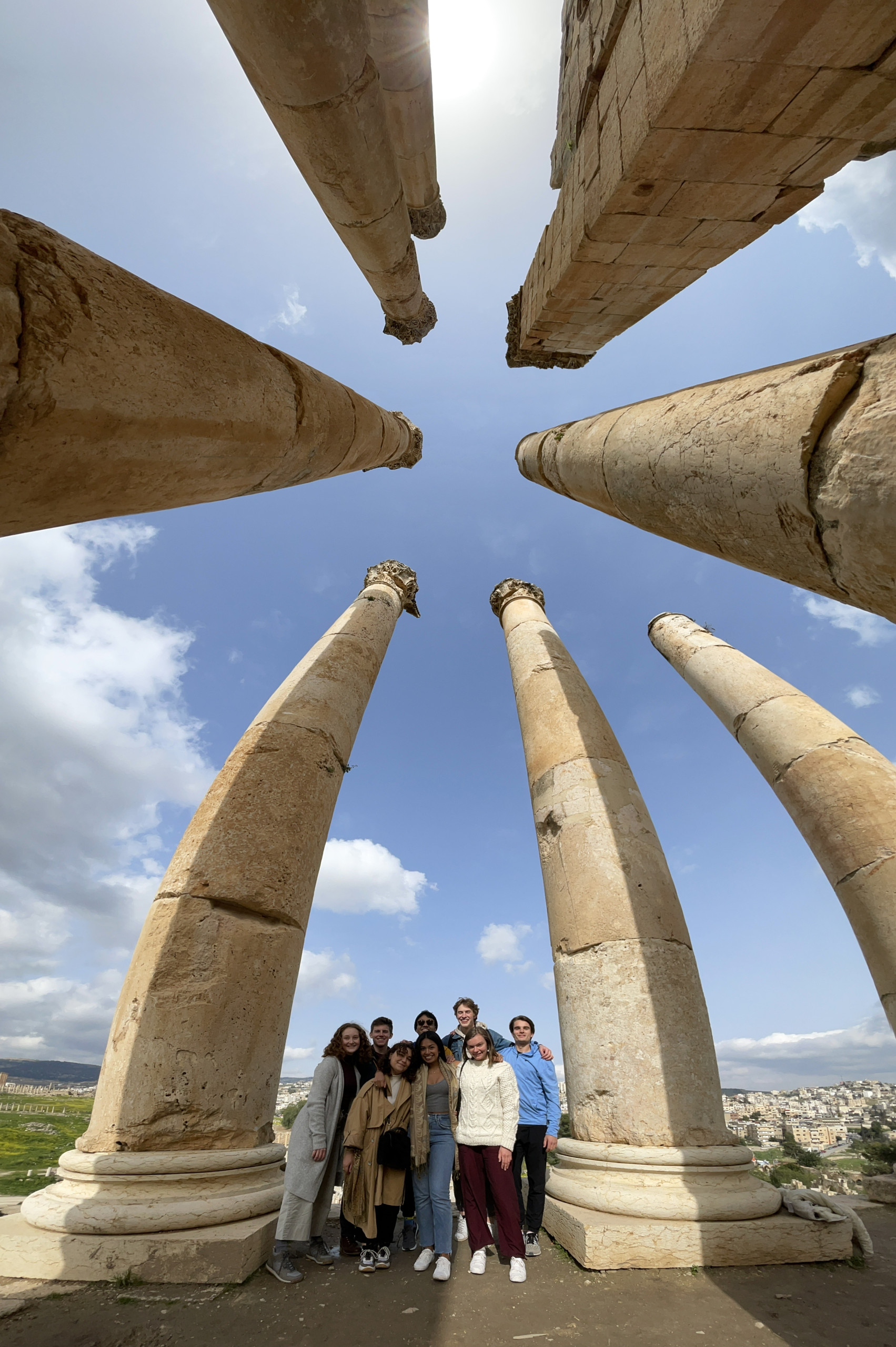The Hidden Treasure of Jerash
How many of us have ever thought of Jordan when talking about theater?
If we’re being honest, we would admit that it’s not our first thought, or even the second. Maybe it is due to the popularity of Greek theater in educational curricula, or the fascination of media outlets with the contemporary London and New York theater scenes, but there is no question that generally the cultural heritage of Jordanian theater remains unseen.
In Jordan, we have been lucky to open our eyes and admire its fascinating history. During our first week, we had opportunities to walk around Amman and take-in and adjust to the local lifestyle. This weekend, we had our first day-long trip to the north of Jordan, home to the country’s olive trees, homemade wine and astonishing archeological sites.

Our tour was accompanied by a local guide. The insightful journey started from the second we stepped into the bus. While traveling through the narrow and busy streets of Amman, our guide shared important information about the sites we were about to visit. The silence in the bus was broken from time to time by the guide to provide commentary on a building we passed, or a joke that came to his mind. However, the moment we were driving through Salt, an old city close to the capital, Amman, we passed by multiple cement buildings, built extremely close to each other. Here, our guide told us the area was a home to more than one million Palestinian refugees; a side of Jordan’s history hidden from the eyes of a tourist, filled with pain and resistance, and one of many shelters for people who are in search of a new beginning. It was just a brief moment, a short comment, but one that spoke the most.
After the long ride, we arrived at Ajloun and an ancient castle still standing from before Roman times. Some of our group members said that it’s likely the oldest place they have ever visited. The ancient architecture, which had survived multiple occupations and earthquakes, was home to many locals for centuries. On the top of the castle was a breathtaking view from where we could see Palestine, Israel, Syria and even Lebanon. In the past, the strategic location of the castle allowed people in the region to communicate with one another through signal fires, when the regions were united, strong and peaceful. Now, it’s a viewpoint for many nostalgic patriots, who want to see home, at least from far away. And, the day we visited, the castle was also a host to Dutch producers and a cinema crew, who were filming a secret Dutch soap opera in the beautiful remains of the Ajloun castle.

We continued our journey to the old city of Jerash that dates back to 5000-7000 B.C. Imagine Roman arch gates, horse racing fields, an entire architectural complex that represented people’s lifestyle centuries ago. The united style of the temples, theaters and trade gateways covered the entire city. This impressive infrastructure reflected the advanced lifestyle of people in the past. Jerash, as a trade crossroads of Damascus (Syria), Baghdad (Iraq), Jerusalem (Palestine) and Beirut (Lebanon), struck me the most, as I realized how distance was challenged in the past and how humans found creative solutions to share culture and trade goods.
Why do we underestimate our past? I kept thinking about this question while walking on the cobblestoned roads of Jerash. We are so consumed with our recent achievements that sometimes we discredit the wonders of the past. The temples we saw had remained there for centuries. Humans were able to build strong castles, share and trade, and connected with each other centuries ago. But these thoughts remain foreign to us, to the generation that grew up with the internet and one phone call away from each other.
 Did we forget how to be human?
Did we forget how to be human?
In the crossroads of being a tourist, but wanting to get to the locals, I found myself wondering if I should take out my phone and document my eye-opening experiences, or to sit on top of the temple, breathe in the fresh air, and watch people walking around the yellow fields surrounding Jerash. To take a second to be a human. In a crowd of many visitors, I found my way to a local man, who was selling handmade jewelry. His eagerness made me feel connected with the place, his stories of Jerash, and the stories passed down to him by his family. His tight hugs and welcoming words made this trip unforgettable, and the hospitality and the kindness of Jordanian people may bring me back here in the future.
You must be logged in to post a comment.